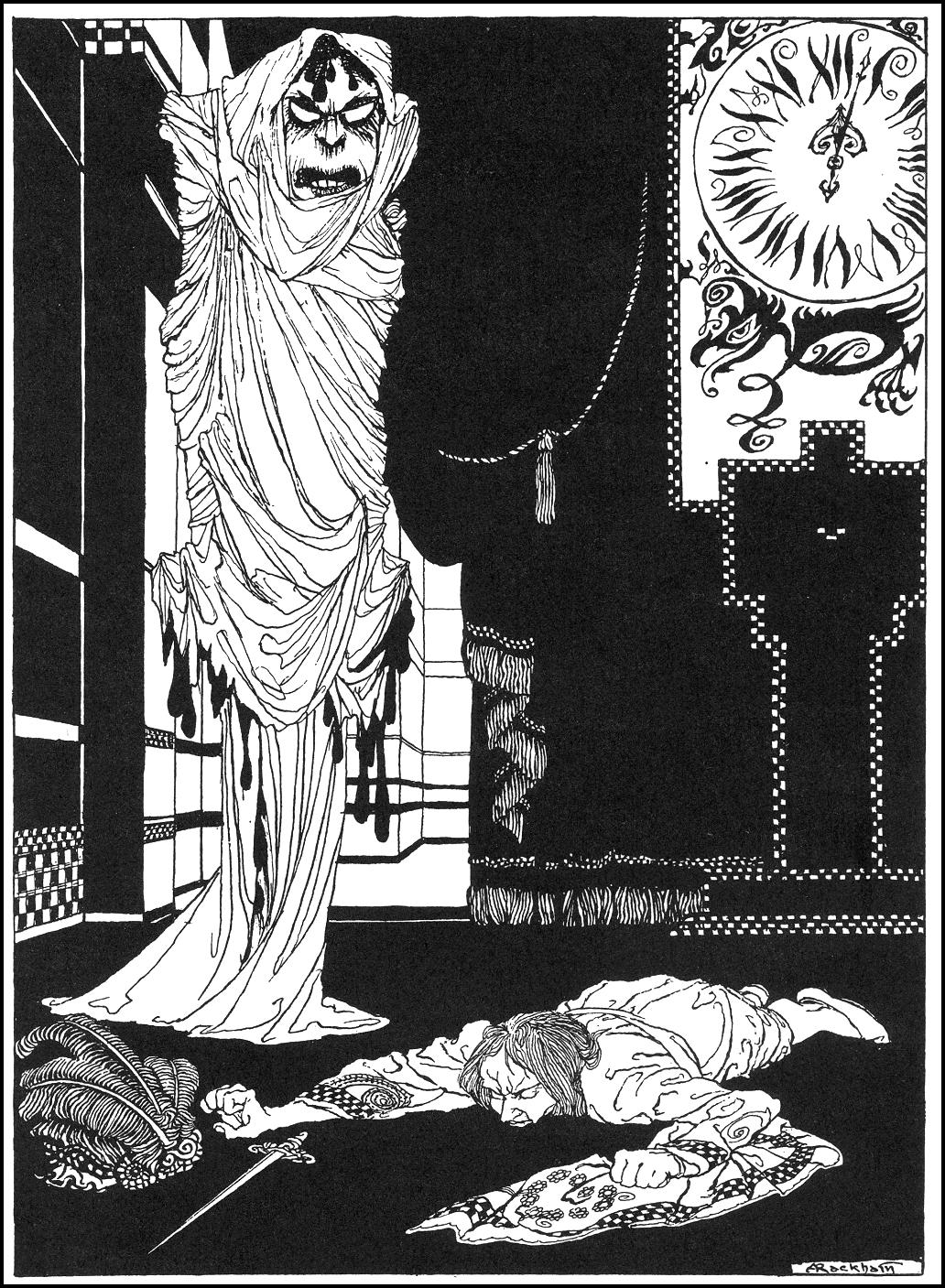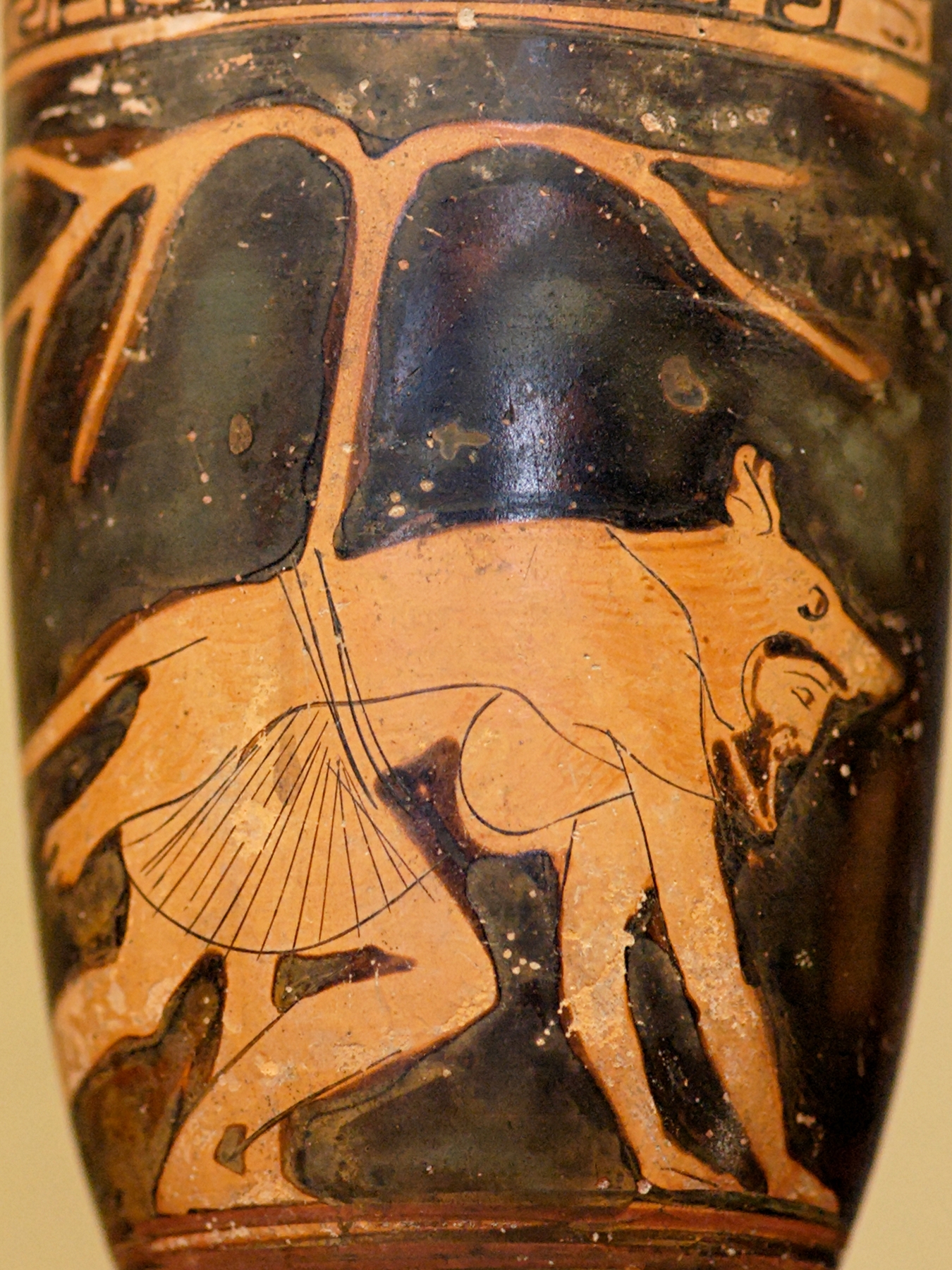|
Dark Fantasy
Dark fantasy, also called fantasy horror, is a subgenre of fantasy literary, artistic, and cinematic works that incorporates disturbing and frightening themes. The term is ambiguously used to describe stories that combine horror fiction, horror elements with one or other of the standard formulas of fantasy. Definition A strict definition for dark fantasy is difficult to pin down. Gertrude Barrows Bennett has been called "the woman who invented dark fantasy". Both Charles L. Grant''The Greenwood Encyclopedia of Science Fiction and Fantasy: Themes, Works, and Wonders'', Volume 1, edited by Gary Westfahl, Greenwood Publishing Group, 2005. and Karl Edward Wagner are credited with having coined the term "dark fantasy"—although both authors were describing different styles of fiction. Brian Stableford argues "dark fantasy" can be usefully defined as subgenre of stories that attempt to "incorporate elements of horror fiction" into the standard formulae of fantasy stories. Stableford a ... [...More Info...] [...Related Items...] OR: [Wikipedia] [Google] [Baidu] |
Subgenre
Genre () is any style or form of communication in any mode (written, spoken, digital, artistic, etc.) with socially agreed-upon conventions developed over time. In popular usage, it normally describes a category of literature, music, or other forms of art or entertainment, based on some set of stylistic criteria, as in literary genres, film genres, music genres, comics genres, etc. Often, works fit into multiple genres by way of borrowing and recombining these conventions. Stand-alone texts, works, or pieces of communication may have individual styles, but genres are amalgams of these texts based on agreed-upon or socially inferred conventions. Some genres may have rigid, strictly adhered-to guidelines, while others may show great flexibility. The proper use of a specific genre is important for a successful transfer of information ( media-adequacy). Critical discussion of genre perhaps began with a classification system for ancient Greek literature, as set out in Aristotle's ' ... [...More Info...] [...Related Items...] OR: [Wikipedia] [Google] [Baidu] |
Monster
A monster is a type of imaginary or fictional creature found in literature, folklore, mythology, fiction and religion. They are very often depicted as dangerous and aggressive, with a strange or grotesque appearance that causes Anxiety, terror and fear, often in humans. Monsters usually resemble wikt:bizarre, bizarre, deformed, otherworldly and/or mutated animals or entirely unique creatures of varying sizes, but may also take a human form, such as Mutants in fiction, mutants, ghosts, Spirit (supernatural entity), spirits, cannibals or zombies, among other things. They may or may not have supernatural powers, but are usually capable of killing or causing some form of destruction, threatening the social or moral order of the human world in the process. Animal monsters are outside the moral order, but sometimes have their origin in some human violation of the moral law (e.g. in the Greek myth, Minos does not sacrifice to Poseidon the white bull which the god sent him, so as punish ... [...More Info...] [...Related Items...] OR: [Wikipedia] [Google] [Baidu] |
Sword And Sorcery
Sword and sorcery (S&S), or heroic fantasy, is a subgenre of fantasy characterized by sword-wielding heroes engaged in exciting and violent adventures. Elements of Romance (love), romance, Magic (fantasy), magic, and the supernatural are also often present. Unlike works of high fantasy, the tales, though dramatic, focus on personal battles rather than world-endangering matters. The genre originated from the early-1930s works of Robert E. Howard. While there is a chance example from 1953, Fritz Leiber re-coined the term "sword and sorcery" in the 6 April 1961 issue of the fantasy fanzine ''Ancalagon'', to describe Howard and the stories that were influenced by his works. In parallel with "sword and sorcery", the term "heroic fantasy" is used, although it is a more loosely defined genre. Sword and sorcery tales eschew overarching themes of "good vs evil" in favor of situational conflicts that often pit morally gray characters against one another to enrich themselves, or to defy ... [...More Info...] [...Related Items...] OR: [Wikipedia] [Google] [Baidu] |
Kane (fantasy)
Kane is a fictional character created by American author Karl Edward Wagner in a series of three novels and about 20 short stories published between 1970 and 1985. Most Kane tales are sword and sorcery with strong elements of gothic horror and set in a grim, pre-medieval world which is nonetheless ancient and rich in history. In some of Wagner's later stories, Kane appears in the present day—for example, as a drug dealer in "Lacunae" and as a somewhat suspect publishing magnate in "At First Just Ghostly". Mike Ashley, "Wagner, Karl Edward" in ''St. James Guide To Fantasy Writers'', edited by David Pringle. St. James Press, 1996, p. 583-4. Character background Little is known about Kane's origins. In the story "Misericorde", he declares to one of his foes that his father's name was Adam, and his stepmother's name was Eve, possibly making him the biological son of the Biblical Adam's first wife Lilith. Like traditional depictions of Cain, he is a powerful, left-handed man with re ... [...More Info...] [...Related Items...] OR: [Wikipedia] [Google] [Baidu] |
The Masque Of The Red Death
"The Masque of the Red Death" (originally published as "The Mask of the Red Death: A Fantasy") is a short story by American writer Edgar Allan Poe, first published in 1842. The story follows Prince Prospero's attempts to avoid a dangerous plague, known as the Red Death, by hiding in his abbey. He, along with many other wealthy nobles, hosts a masquerade ball in seven rooms of the abbey, each decorated with a different color. In the midst of their revelry, a mysterious figure disguised as a Red Death victim enters and makes his way through each of the rooms. Prospero dies after confronting this stranger, whose "costume" proves to contain nothing tangible inside it. The guests also die in turn. Poe's story follows many traditions of Gothic fiction and is often analyzed as an allegory about the inevitability of death, though some critics advise against an allegorical reading. Many different interpretations have been presented, as well as attempts to identify the true nature of the ... [...More Info...] [...Related Items...] OR: [Wikipedia] [Google] [Baidu] |
Edgar Allan Poe
Edgar Allan Poe (; January 19, 1809 – October 7, 1849) was an American writer, poet, editor, and literary critic who is best known for his poetry and short stories, particularly his tales involving mystery and the macabre. He is widely regarded as one of the central figures of Romanticism and Gothic fiction in the United States and of early American literature. Poe was one of the country's first successful practitioners of the short story, and is generally considered to be the inventor of the detective fiction genre. In addition, he is credited with contributing significantly to the emergence of science fiction. He is the first well-known American writer to earn a living exclusively through writing, which resulted in a financially difficult life and career.. Poe was born in Boston. He was the second child of actors David Poe Jr., David and Eliza Poe, Elizabeth "Eliza" Poe. His father abandoned the family in 1810, and when Eliza died the following year, Poe was taken in by ... [...More Info...] [...Related Items...] OR: [Wikipedia] [Google] [Baidu] |
Vathek
''Vathek'' (alternatively titled ''Vathek, an Arabian Tale'' or ''The History of the Caliph Vathek'') is a Gothic novel written by William Beckford. It was composed in French beginning in 1782, and then translated into English by Reverend Samuel Henley in which form it was first published in 1786 without Beckford's name as ''An Arabian Tale, From an Unpublished Manuscript'', claiming to be translated directly from Arabic. The first French edition, titled simply as ''Vathek'', was published in December 1786 (postdated 1787). During the twentieth century some editions include ''The Episodes of Vathek'' (''Vathek et ses épisodes''), three related tales intended by Beckford to be so incorporated, but omitted from the original edition and published separately long after his death. Plot summary Vathek, the ninth caliph of the Abassides, ascended to the throne at an early age. He is a fickle and depraved tyrant, known for his unquenchable thirst for knowledge, and often invite ... [...More Info...] [...Related Items...] OR: [Wikipedia] [Google] [Baidu] |
William Thomas Beckford
William Thomas Beckford (29 September 1760 – 2 May 1844) was an English novelist, art critic, planter and politician. He was reputed at one stage to be England's richest commoner. He was the son of William Beckford (politician), William Beckford and Maria Hamilton, daughter of the Hon. George Hamilton (died 1775), George Hamilton, and he served as a member of parliament for Wells (UK Parliament constituency), Wells in 1784–1790 and Hindon (UK Parliament constituency), Hindon in 1790–1795 and 1806–1820. Beckford is best known for writing the 1786 Gothic novel ''Vathek'', for building Fonthill Abbey in Wiltshire and Beckford's Tower in Bath, Somerset, Bath, and for his extensive art collection. Biography Beckford was born in the family's London home at 22 Soho Square on 29 September 1760. At the age of ten, he inherited a fortune from his father William Beckford (politician), William Beckford, who had been twice a Lord Mayor of London. It consisted of £1 million in cash, ... [...More Info...] [...Related Items...] OR: [Wikipedia] [Google] [Baidu] |
Vampire
A vampire is a mythical creature that subsists by feeding on the Vitalism, vital essence (generally in the form of blood) of the living. In European folklore, vampires are undead, undead humanoid creatures that often visited loved ones and caused mischief or deaths in the neighbourhoods which they inhabited while they were alive. They wore shrouds and were often described as bloated and of ruddy or dark countenance, markedly different from today's gaunt, pale vampire which dates from the early 19th century. Vampiric entities have been Vampire folklore by region, recorded in cultures around the world; the term ''vampire'' was popularized in Western Europe after reports of an 18th-century mass hysteria of a pre-existing folk belief in Southeast Europe, Southeastern and Eastern Europe that in some cases resulted in corpses being staked and people being accused of vampirism. Local variants in Southeastern Europe were also known by different names, such as ''shtriga'' in Albanian ... [...More Info...] [...Related Items...] OR: [Wikipedia] [Google] [Baidu] |
Werewolf
In folklore, a werewolf (), or occasionally lycanthrope (from Ancient Greek ), is an individual who can shapeshifting, shapeshift into a wolf, or especially in modern film, a Shapeshifting, therianthropic Hybrid beasts in folklore, hybrid wolf–humanlike creature, either purposely or after being placed under a curse or affliction, often a bite or the occasional scratch from another werewolf, with the transformations occurring on the night of a full moon. Early sources for belief in this ability or affliction, called lycanthropy, are Petronius (27–66) and Gervase of Tilbury (1150–1228). The werewolf is a widespread concept in European folklore, existing in many variants, which are related by a common development of a Christianization, Christian interpretation of underlying European folklore developed during the Middle Ages. From the early modern period, werewolf beliefs spread to the New World with colonialism. Belief in werewolves developed in parallel to the belief in Eu ... [...More Info...] [...Related Items...] OR: [Wikipedia] [Google] [Baidu] |
The Sandman (comic Book)
''The Sandman'' is a American comic book, comic book written by Neil Gaiman and published by DC Comics. Its artists include Sam Kieth, Mike Dringenberg, Jill Thompson, Shawn McManus, Marc Hempel, Bryan Talbot, and Michael Zulli, with lettering by Todd Klein and covers by Dave McKean. The original series ran for 75 issues from January 1989 to March 1996. Beginning with issue No. 47, it was placed under DC's Vertigo Comics, Vertigo Imprint (trade name), imprint, and following Vertigo's retirement in 2020, reprints have been published under DC's DC Black Label, Black Label imprint. The main character of ''The Sandman'' is Dream (character), Dream, also known as Morpheus and other names, who is one of the seven Endless (comics), Endless. The other Endless are Destiny (DC Comics), Destiny, Death (DC Comics), Death, Desire (DC Comics), Desire, Despair (DC Comics), Despair, Delirium (comics), Delirium (formerly Delight), and Destruction (DC Comics), Destruction (also known as the Prodi ... [...More Info...] [...Related Items...] OR: [Wikipedia] [Google] [Baidu] |
Neil Gaiman
Neil Richard MacKinnon Gaiman (; born Neil Richard Gaiman; 10 November 1960) is an English author of short fiction, novels, comic books, audio theatre, and screenplays. His works include the comic series ''The Sandman (comic book), The Sandman'' (1989–1996) and the novels ''Good Omens'' (1990), ''Stardust (Gaiman novel), Stardust'' (1999), ''American Gods'' (2001), ''Coraline'' (2002), ''Anansi Boys'' (2005), ''The Graveyard Book'' (2008) and ''The Ocean at the End of the Lane'' (2013). He co-created the TV adaptations of ''Good Omens (TV series), Good Omens'' and ''The Sandman (TV series), The Sandman''. Gaiman's awards include Hugo Award, Hugo, Nebula Award, Nebula, and Bram Stoker Award, Bram Stoker awards and Newbery Medal, Newbery and Carnegie Medal (literary award), Carnegie medals. He is the first author to win the Newbery and the Carnegie medals for the same work, ''The Graveyard Book''. ''The Ocean at the End of the Lane'' was voted Book of the Year in the British ... [...More Info...] [...Related Items...] OR: [Wikipedia] [Google] [Baidu] |







